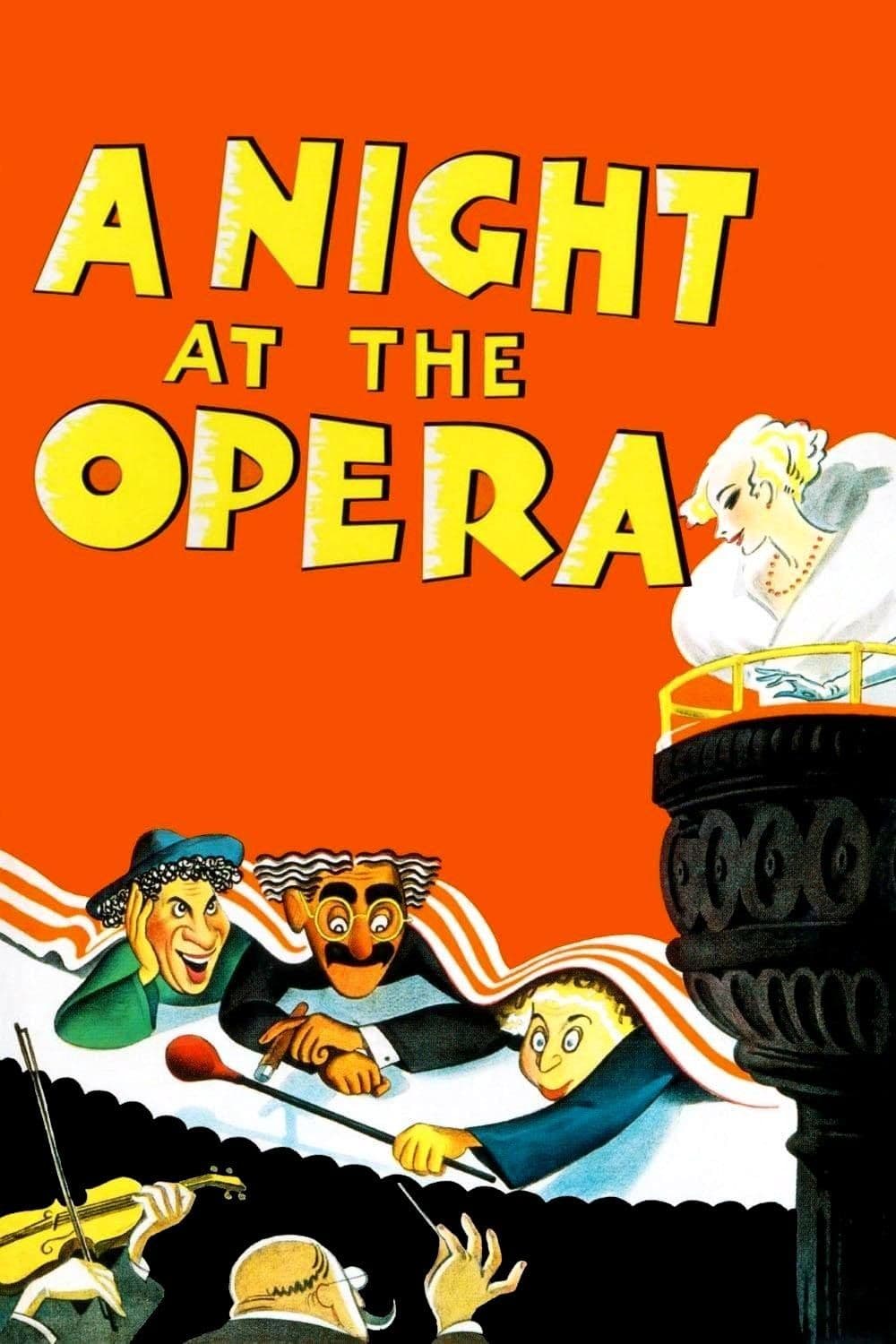
A Night at the Opera
1935
Rate this movie
Average: 0.00 / 5
(0 votes)
Director
The Marx Brothers, at their comedic zenith, ignite a whirlwind of gags and irresistible antics, creating a hilarious and irreverent film. Under the masterful direction of Sam Wood, Groucho, Chico, and Harpo unleash their comedic genius, crafting a work that transcends simple entertainment and rises to a sharp critique of high society and the show business world. MGM granted the Marxes a colossal budget, giving the three carte blanche for creativity and technical execution, and the result is a brilliant and innovative film that still makes audiences laugh and reflect today. This transition from Paramount, where their style was wilder and more anarchic, to the more polished MGM, was masterfully managed by producer Irving Thalberg, whose insight was not to tame the Marxes, but to channel their anarchy into a more solid narrative structure, making them accessible to a wider audience without diluting their revolutionary essence. Thalberg's genius also manifested in the idea of live-testing gags in vaudeville theaters before filming, a process that allowed every joke, every reaction, every comedic sequence to be refined to perfection, ensuring that the on-screen chaos was, paradoxically, the result of meticulous planning.
Otis B. Driftwood (Groucho), manager of the hypochondriac Mrs. Claypool (Margaret Dumont), endeavors to launch the tenor Rodolfo Lassparri (Walter Woolf King) at the Metropolitan Opera. But his plans are overturned by the arrival of Fiorello (Chico) and Tomasso (Harpo), two con artists who want to help the young tenor Ricardo Baroni (Allan Jones) break into the opera world. Amidst outlandish contracts, misunderstandings, and frenetic chases, the three brothers sow chaos in the theater, culminating in a memorable final sequence where they ruin the performance of Il Trovatore. The plot, though seemingly conventional with its romantic entanglement and opera arias, in reality serves as a mere pretext, a canvas upon which to paint the absurd. The genius lies not in what happens, but in how the Marxes transform every convention into a springboard for their desecration.
The genius of the Marx Brothers lies in their ability to blend physical humor, wordplay, and social satire, creating an explosive mix that lampoons the conventions and hypocrisies of bourgeois society. The mischievous troupe targets, for example, the world of opera, traditionally associated with high society and elitist culture. The Marxes, with their chaotic and disrespectful incursions, demolish the aura of sacredness surrounding this environment, exposing the hypocrisy and superficiality of its attendees. This choice is not accidental: opera, with its pomposity and formal rigidities, represents the quintessential symbol of the cultural establishment, a stronghold that the brothers assault with the force of a Dadaist movement, destroying the established order with the weapon of nonsense and joyous anarchy. The scene where they ruin the performance of Il Trovatore, with Harpo bursting onto the stage disguised as a policeman and Chico playing the piano upside down, is a shining example of this desecrating satire, a true anti-art performance that overturns audience expectations and theatrical decorum.
The rich and influential characters, such as Mrs. Claypool and her entourage, are portrayed as empty and pretentious individuals, concerned only with their social status and appearances. Groucho, with his cynical and sarcastic humor, delights in unmasking their hypocrisy and ridiculing their delusions of grandeur. His character, Otis B. Driftwood, is the embodiment of the intellectual swindler, a parasite who feeds on the weaknesses of high society, yet is simultaneously its fiercest internal critic. In this, he is perfectly balanced by the sublime Margaret Dumont, whose imperturbable seriousness in the face of absolute chaos elevates absurdity to hilarious levels; her impassive dignity is the perfect comedic foil that makes the surrounding madness credible, and even more amusing. Love and marriage also become objects of satire. The relationship between Rodolfo and Rosa is presented as a matter of convenience, while Driftwood's courtship of Mrs. Claypool is a parody of the power dynamics between men and women in high society, a ballet of cynicism and opportunism that exposes the hollowness of bourgeois romantic conventions. The film also offers a subtle critique of the capitalist system, with its mechanisms of exploitation and its profit-driven logic. The characters of Fiorello and Tomasso, with their resourcefulness and ability to improvise, represent a kind of antidote to the greed and selfishness of the wealthy, a chaotic and proletarian force that bursts into the polished environments of money, echoing the social tensions of the Great Depression that permeated America at the time.
Packed with scenes that have become archetypes of comedy. Above all, the stateroom scene stands out for its irresistible comedic crescendo: initially occupied only by Groucho, it is progressively invaded by a series of improbable characters, including a waiter, a steward, a woman looking for her dog, and finally Chico and Harpo. The increasing overcrowding creates a situation of chaos and claustrophobia that serves as a perfect counterpoint to the Marxes' humor. The line "My shirt doesn't snore," uttered in response to a passenger's complaints about noise, remains etched in the history of comedy. Equally memorable is the contract scene, a verbal tour de force in which Groucho and Chico methodically dismantle a legal agreement, tearing its clauses apart piece by piece until reducing it to an insignificant strip of paper. This segment is not only an example of dialogic virtuosity, but a brilliant metaphor for their entire philosophy: the demolition of structures and rules imposed by society. "A Night at the Opera" is not only a comedic masterpiece, but a subversive work of art that continues to speak to contemporary audiences with its timeless irreverence and its ingenious ability to transform the absurd into incisive social criticism.
Genres
Country
Gallery
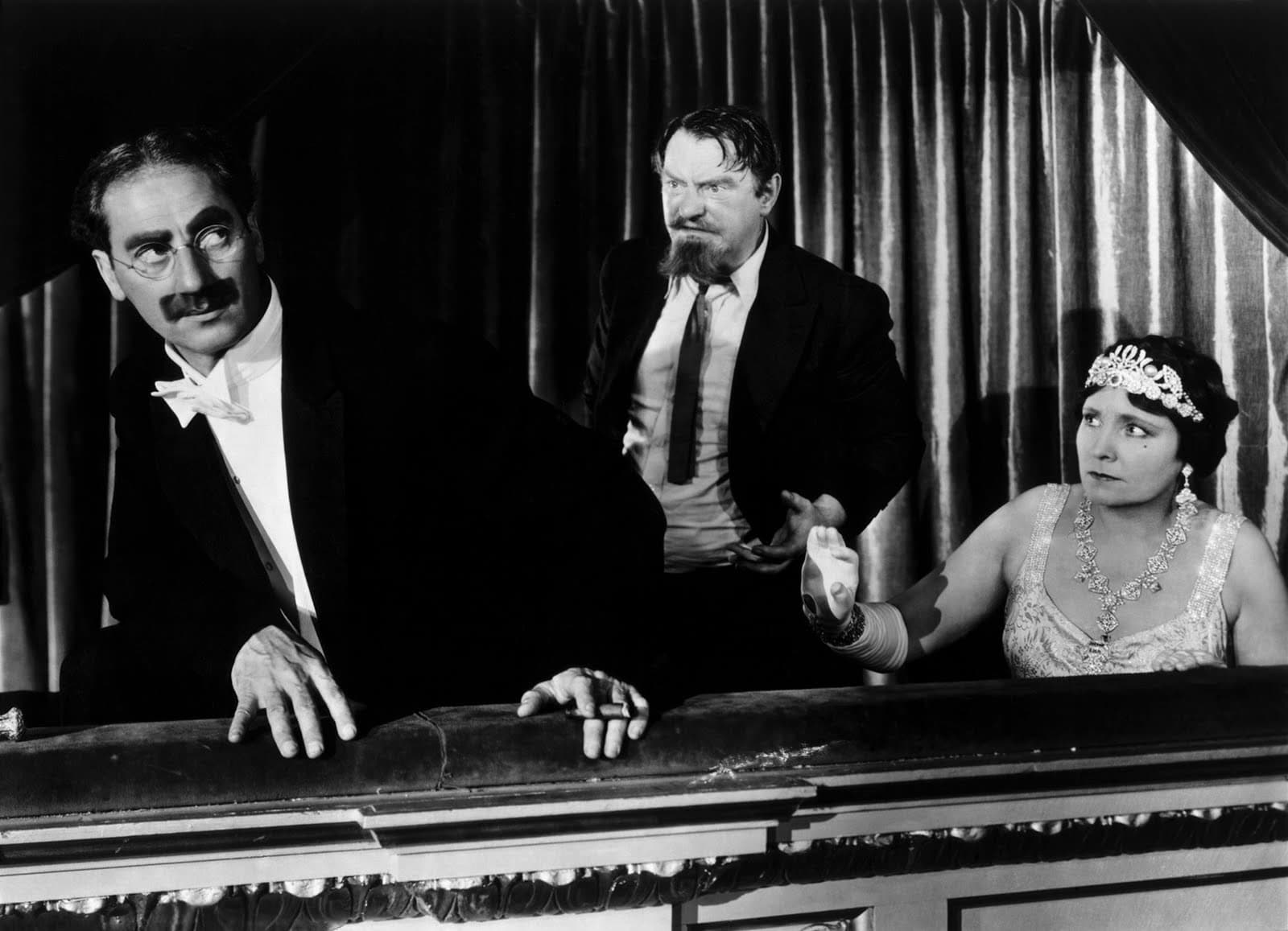
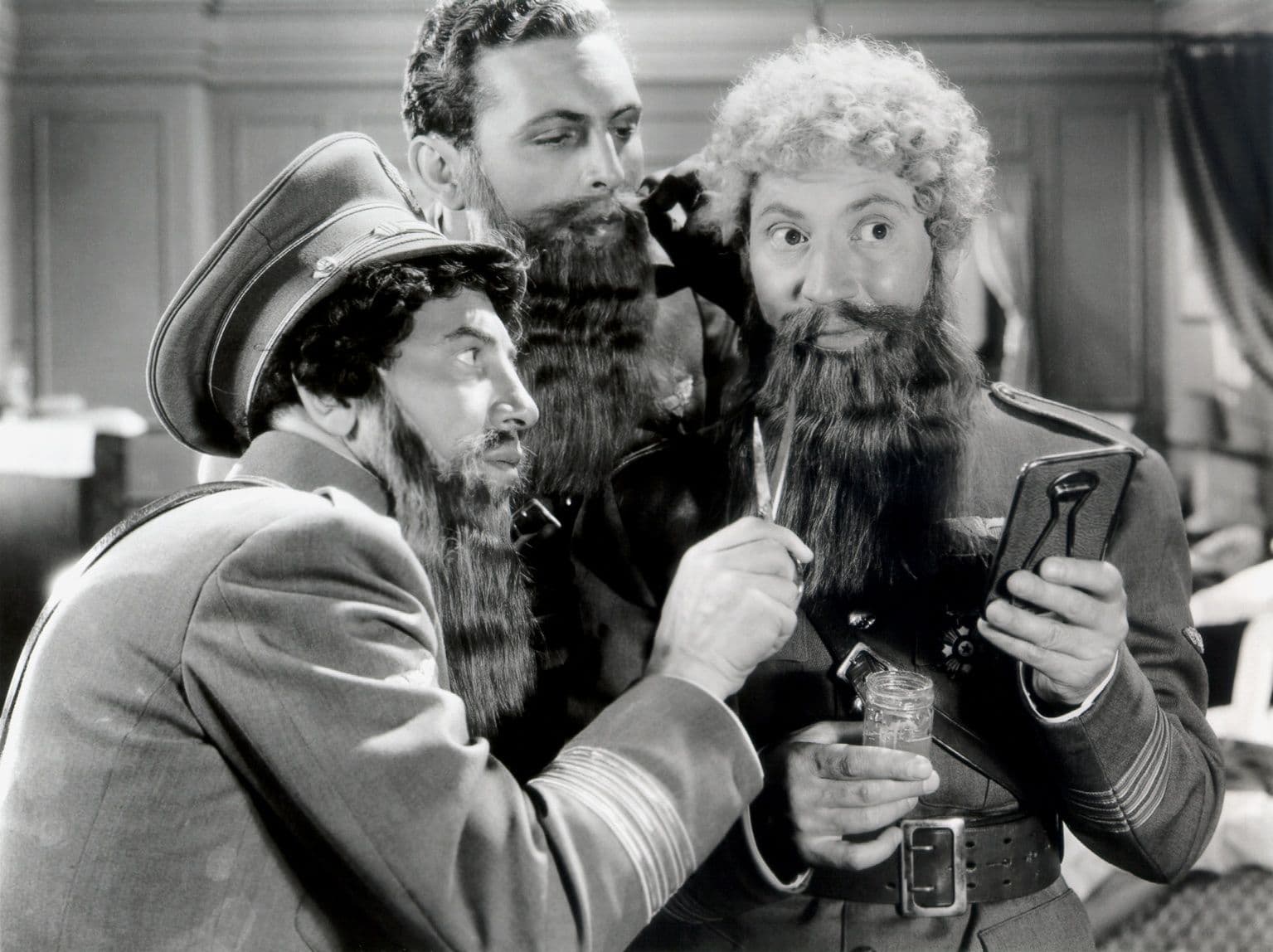
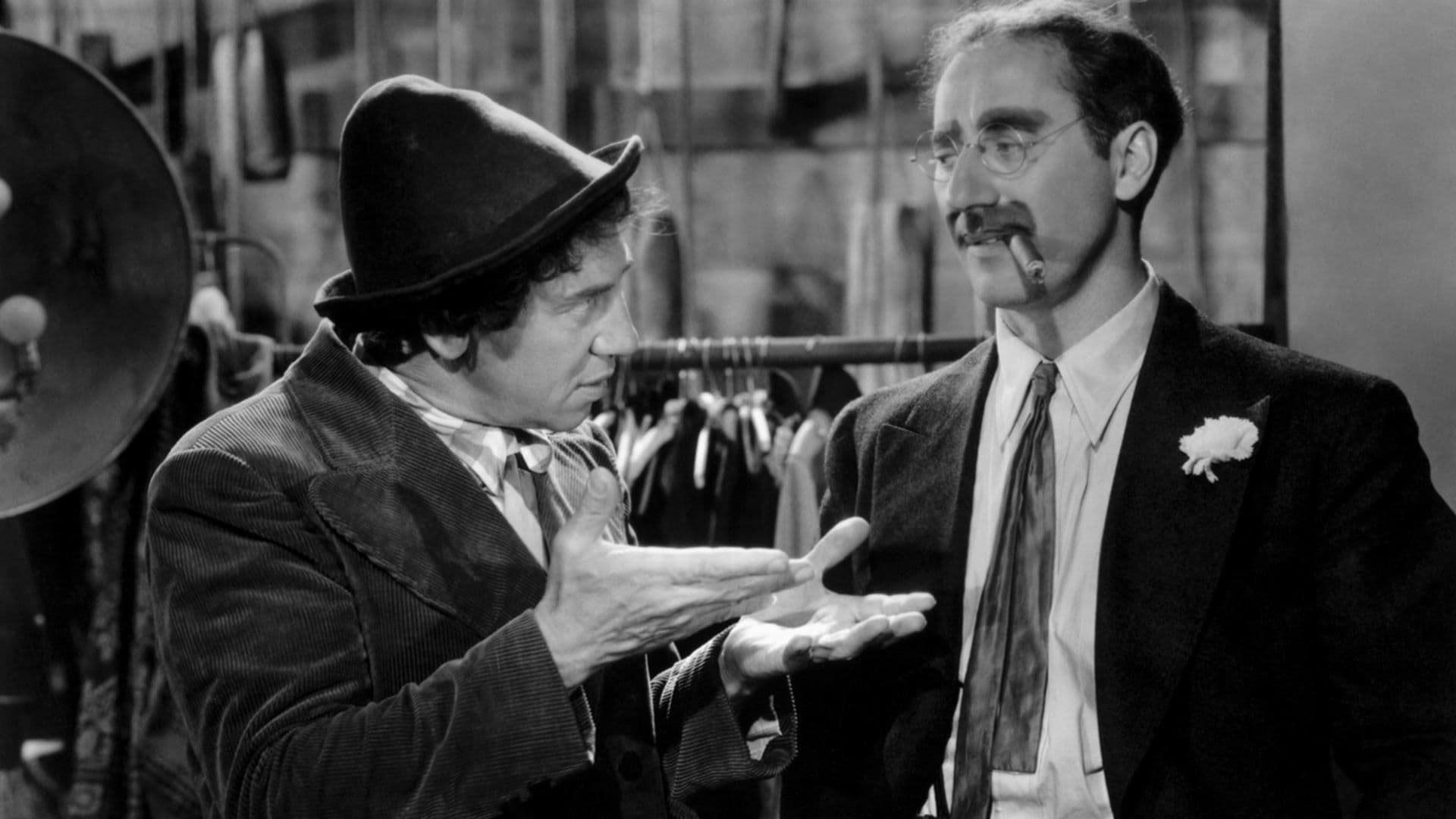
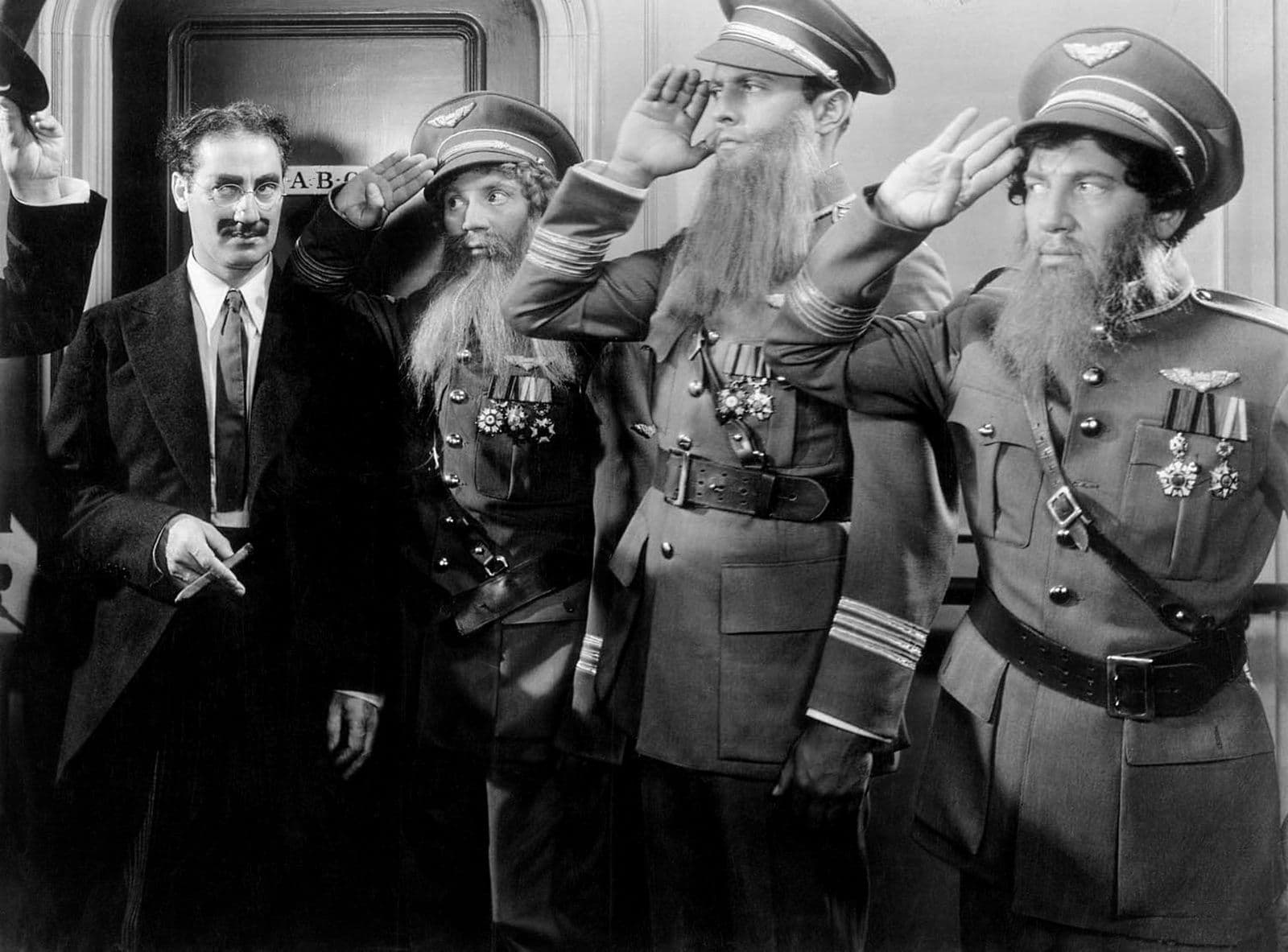
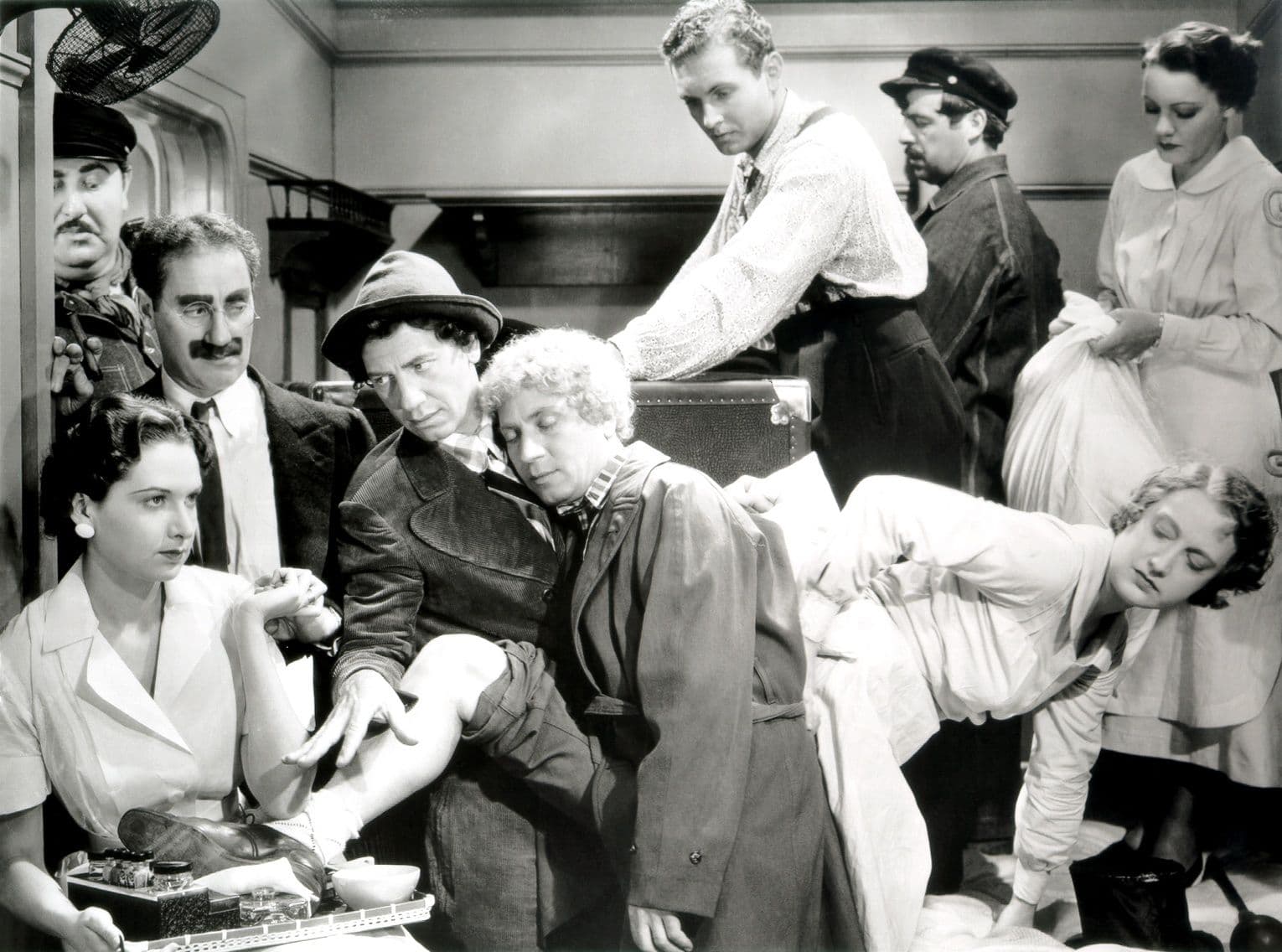
Featured Videos
Official Trailer
Comments
Loading comments...